NASA brings a twist to the West Coast with shell-shaped pavilion
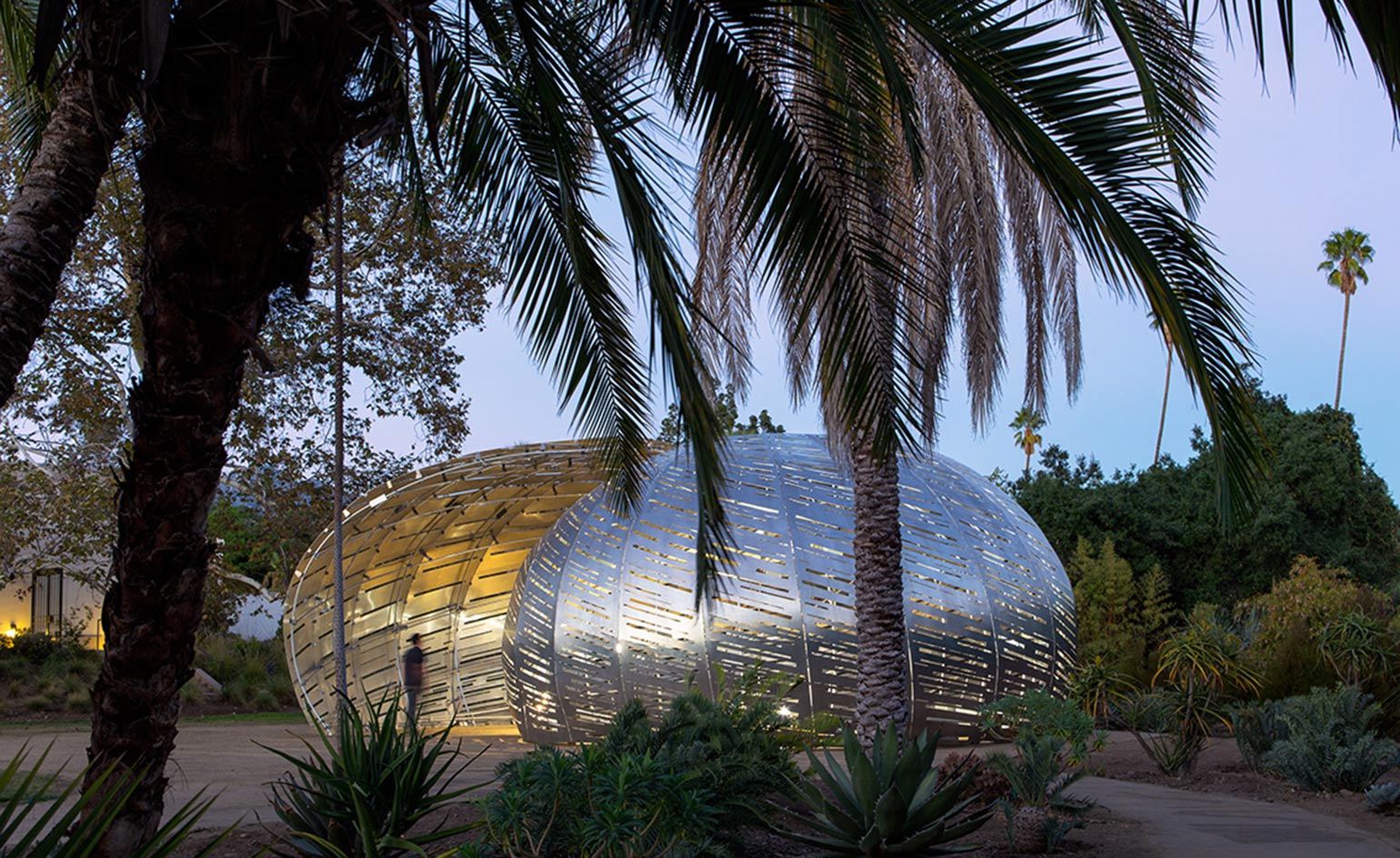
Studio KCA’s immersive astronomy shell, the NASA Orbit Pavilion, has travelled from New York and is now on view for the first time on the West Coast in San Marino, California, where The Huntington Library garden provides a new context to listen to the satellites orbiting the earth.
NASA approached the firm looking for a ‘space to interact with the sounds of satellites’. Inspired by the idea of listening into a shell to hear the sound of the sea, Jason Klimoski and Lesley Chang, principals at Studio KCA, decided to build a shell-shaped chamber with a futuristic skin of aluminium panels.
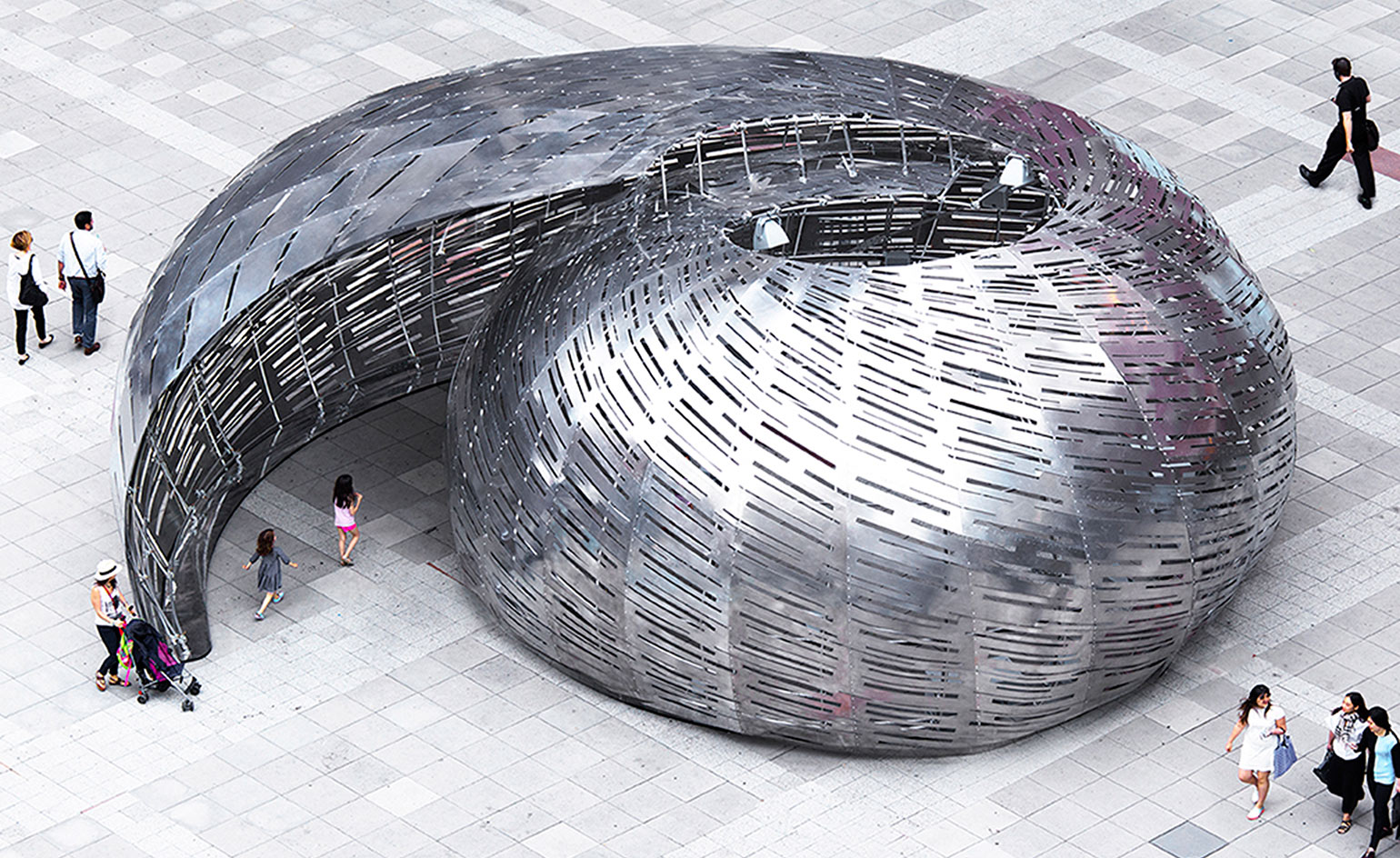
The structure comprises 3,500 sq ft of water jet-cut aluminium panels
Inside, 28 speakers project a sound created in collaboration with the NASA Jet Propulsion Laboratory and sound artist Shane Myrbeck, that represents the movement of the International Space Station and 19 earth satellites circumnavigating the earth.
First seen at the World Science Festival at New York University in a plaza surrounded by buildings, the Orbit Pavilion is now nestled in the enchanting fauna of the Huntington’s 120 acre garden, giving visitors a completely different experience. ‘At the Huntington, on a clear night, you can actually see some of the satellites through the oculus in the middle sound chamber,’ says Klimoski.
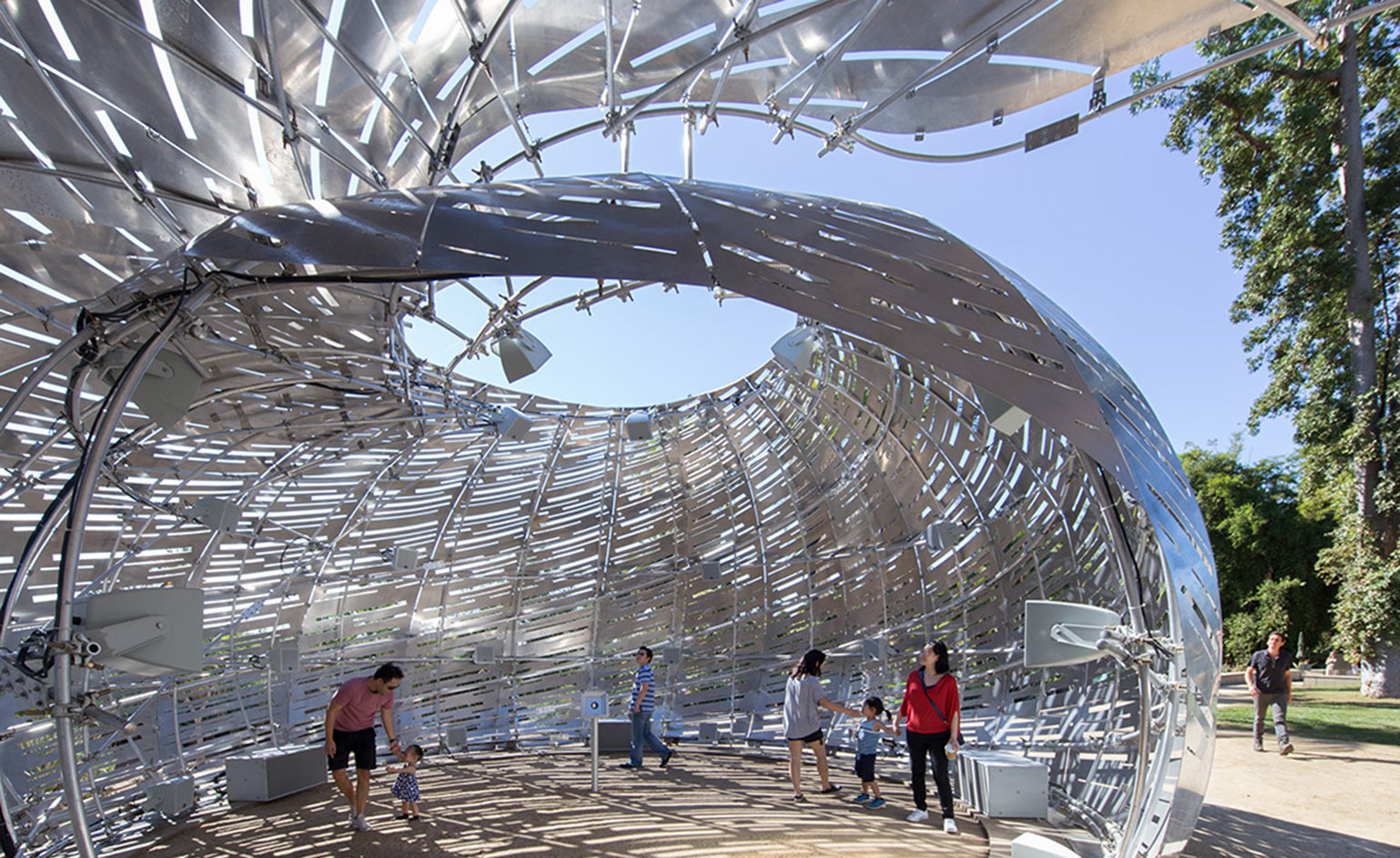
At the centre of the pavilion, a large oculus offers a glimpse of the sky
Cut into the structure's surface, a pattern illustrates the orbital paths of the satellites through space. The decision to use the water jet cutting technique for the structure was made because of ‘the precision and quality needed in making so many cuts across 3,500 sf of material’ says Klimoski. ‘It also feels right to build and shape a giant shell using essentially water.’
The captivating pavilion, a symbol for the collaboration between the STEM industries, has been inspiring younger generations of astronomers and architects alike. Klimoski’s experience so far has been positive: ‘Kids become interested in NASA and their ongoing missions, and they become interested in architecture and design and the opportunities the profession provides to create spaces like the shell.’
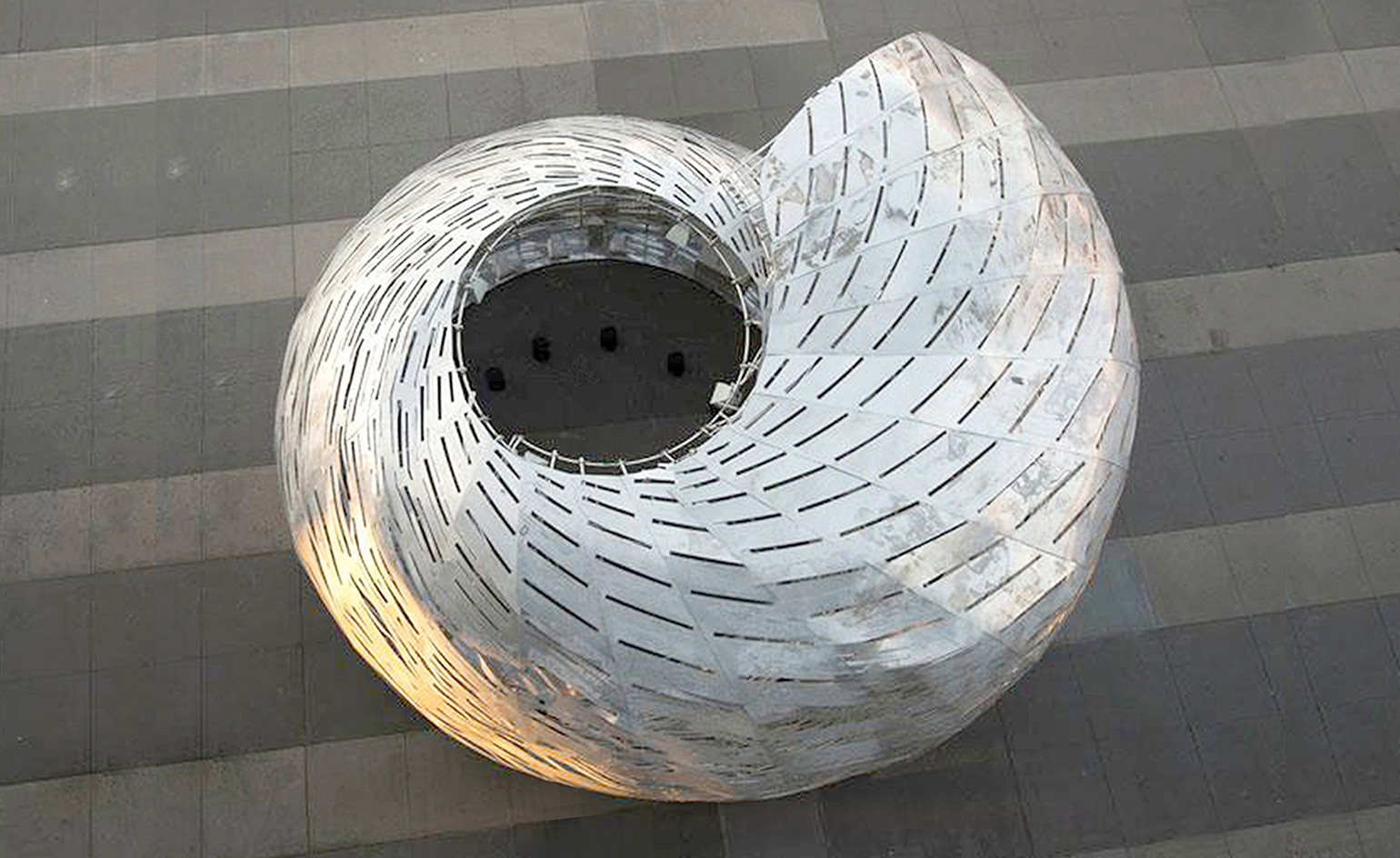
The firm chose to work with aluminium because of its light-weight, yet structurally strong properties
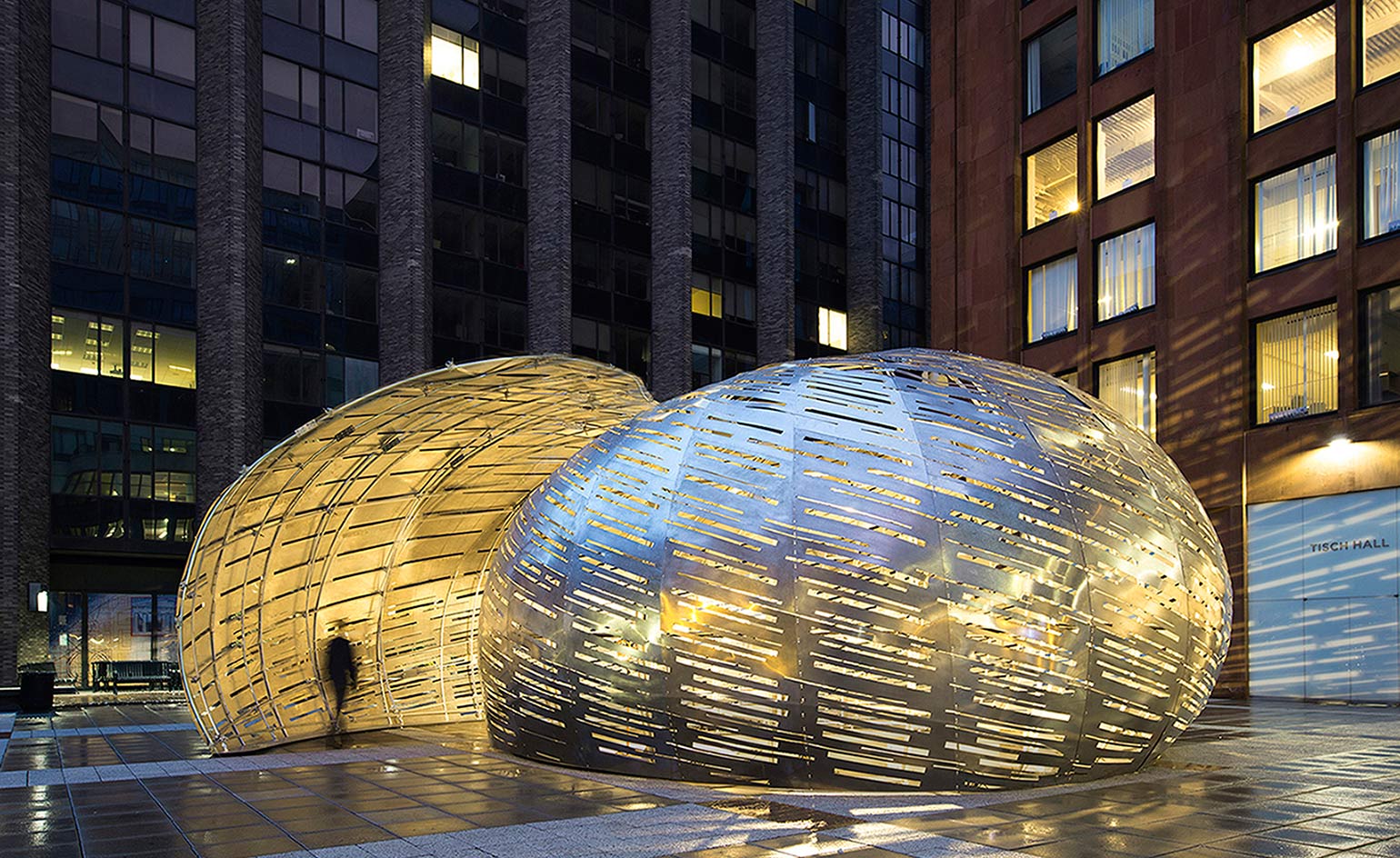
First seen at the World Science Festival at New York University in a plaza surrounded by buildings...
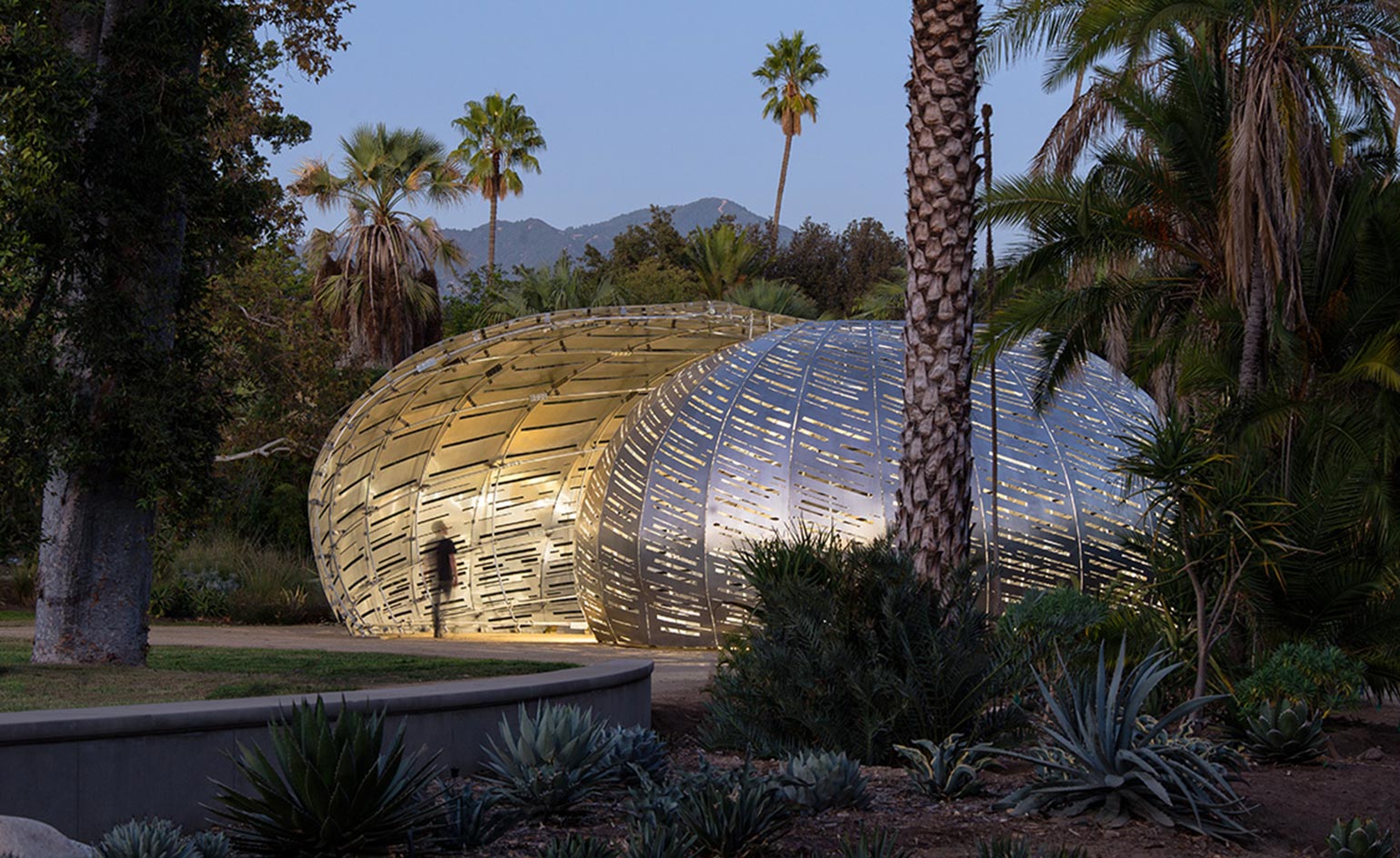
...the Orbit Pavilion is now nestled in the enchanting fauna of the Huntington’s 120 acre garden, giving visitors a completely different experience
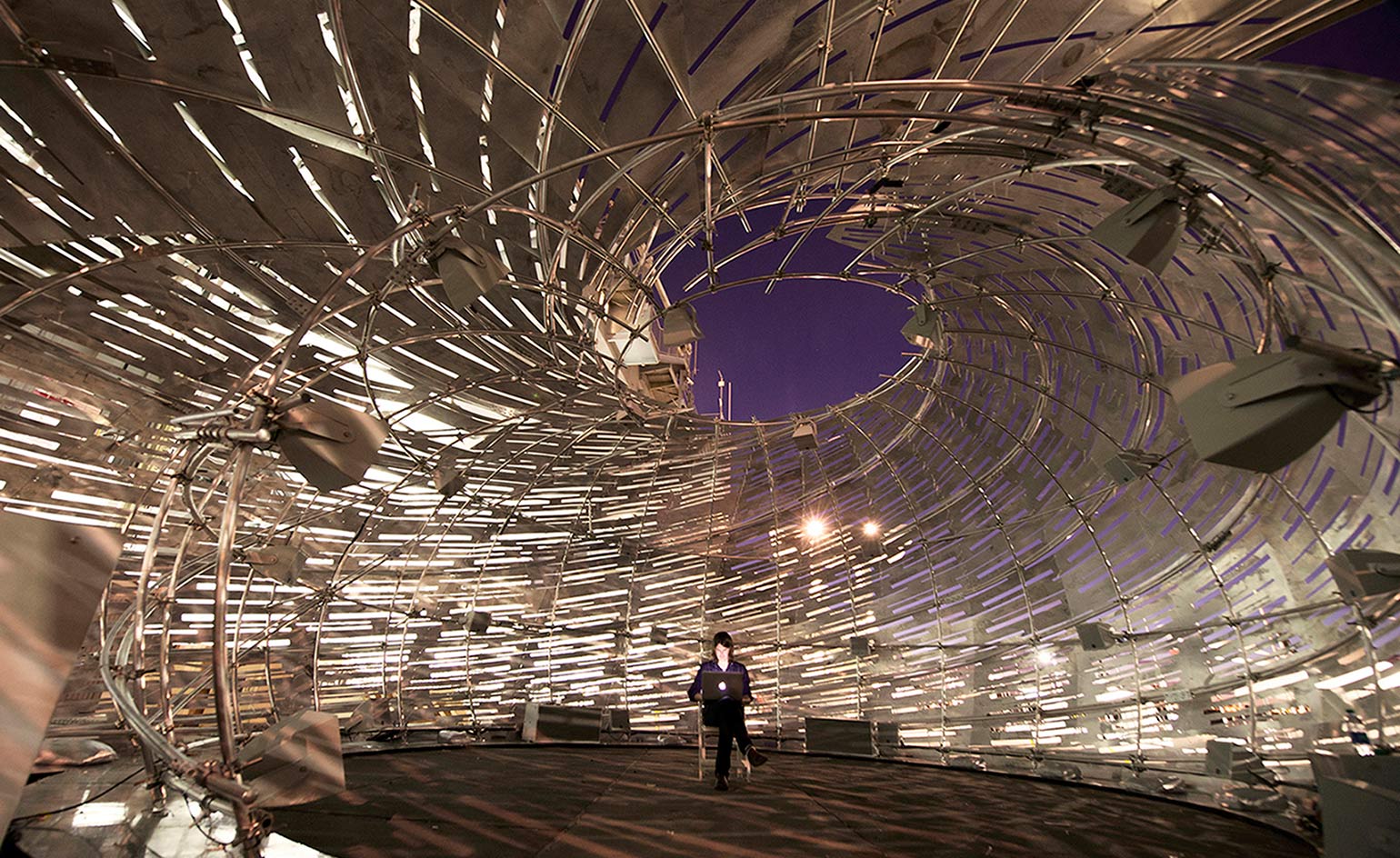
To enhance the effect of the sound inside, the pavilion is designed to minimise external noise and deflect wind.
INFORMATION
For more information, visit the StudioKCA website
Receive our daily digest of inspiration, escapism and design stories from around the world direct to your inbox.
Harriet Thorpe is a writer, journalist and editor covering architecture, design and culture, with particular interest in sustainability, 20th-century architecture and community. After studying History of Art at the School of Oriental and African Studies (SOAS) and Journalism at City University in London, she developed her interest in architecture working at Wallpaper* magazine and today contributes to Wallpaper*, The World of Interiors and Icon magazine, amongst other titles. She is author of The Sustainable City (2022, Hoxton Mini Press), a book about sustainable architecture in London, and the Modern Cambridge Map (2023, Blue Crow Media), a map of 20th-century architecture in Cambridge, the city where she grew up.
-
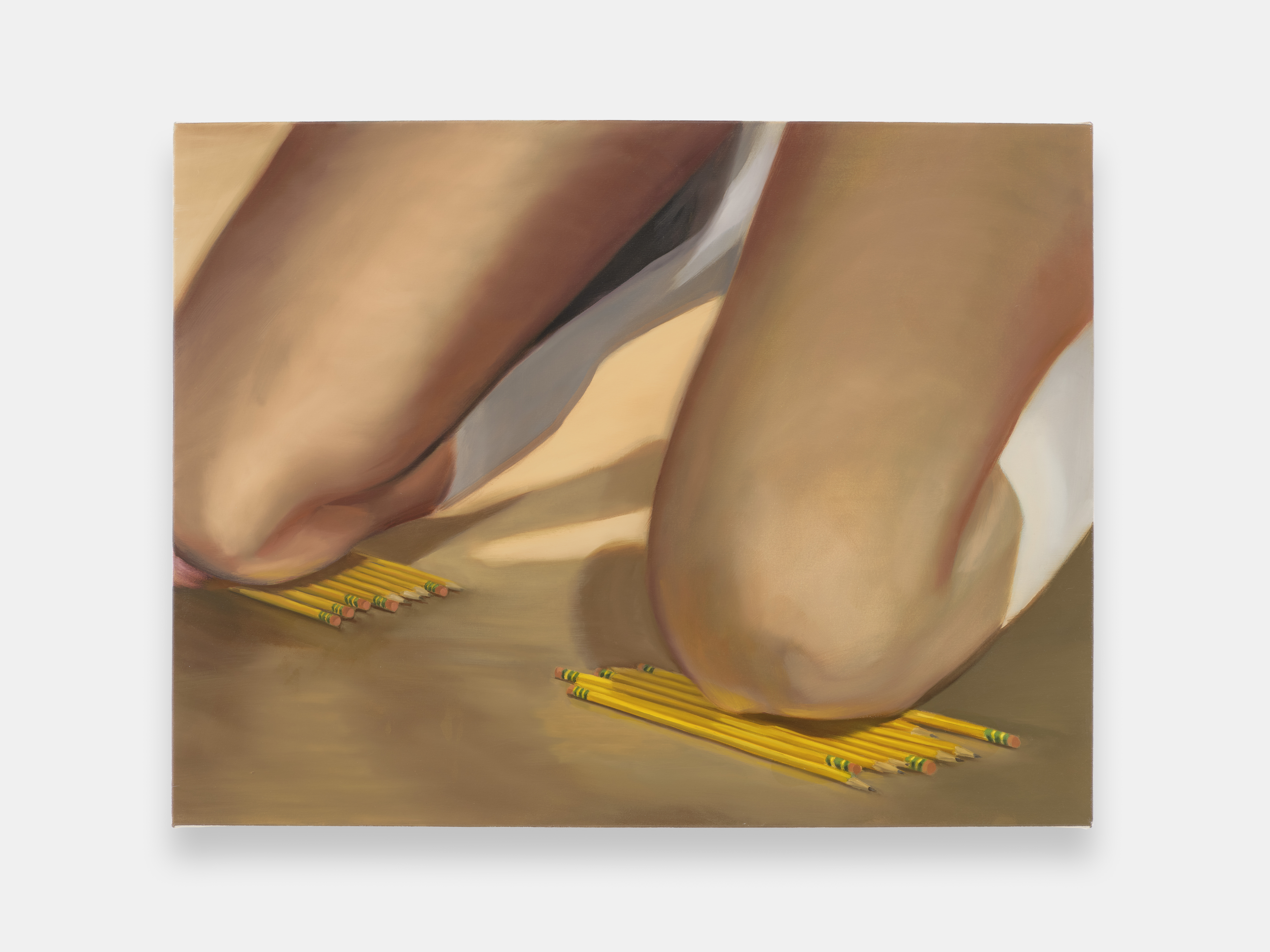 ‘I want to bring anxiety to the surface': Shannon Cartier Lucy on her unsettling works
‘I want to bring anxiety to the surface': Shannon Cartier Lucy on her unsettling worksIn an exhibition at Soft Opening, London, Shannon Cartier Lucy revisits childhood memories
-
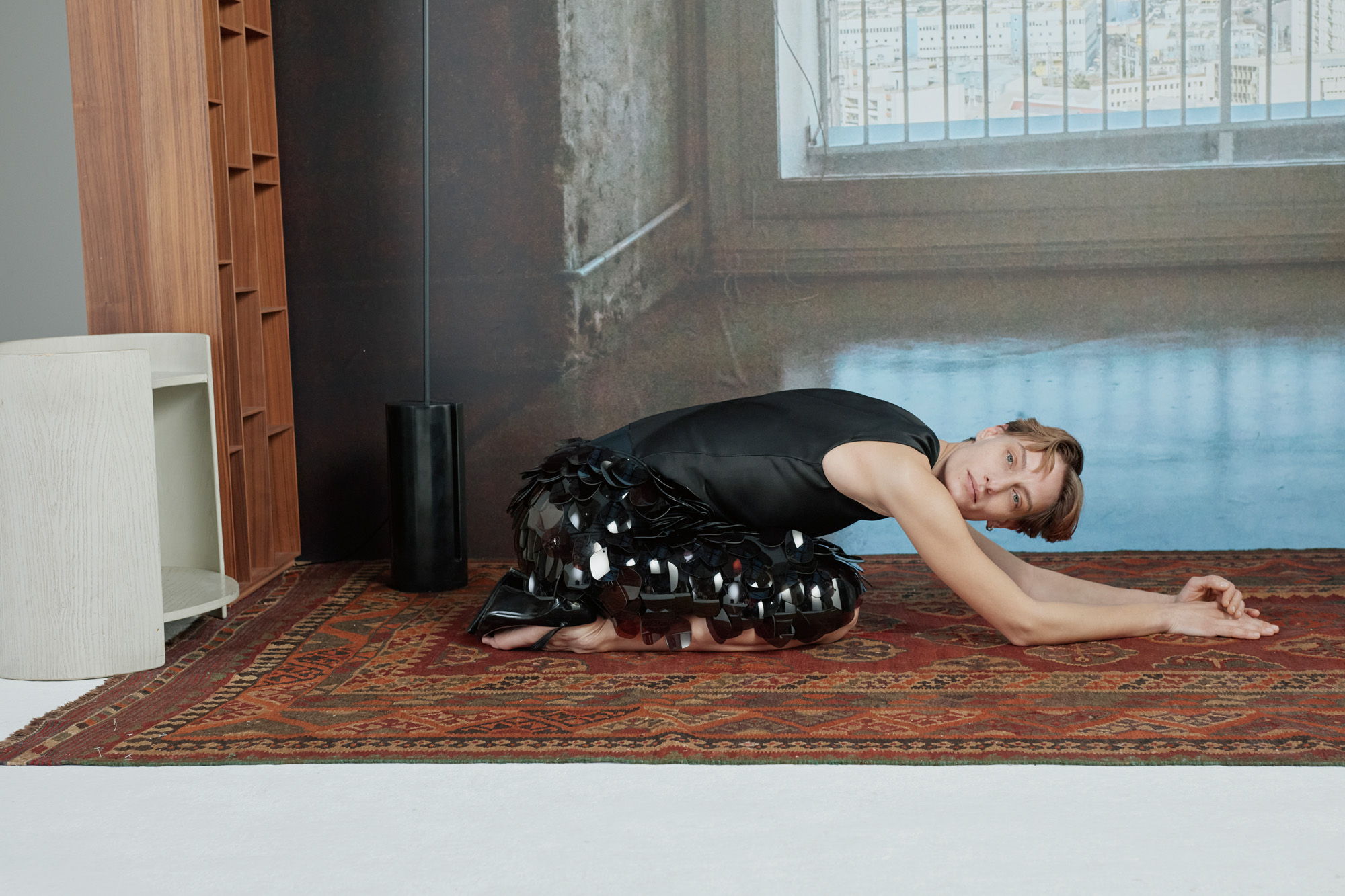 What one writer learnt in 2025 through exploring the ‘intimate, familiar’ wardrobes of ten friends
What one writer learnt in 2025 through exploring the ‘intimate, familiar’ wardrobes of ten friendsInspired by artist Sophie Calle, Colleen Kelsey’s ‘Wearing It Out’ sees the writer ask ten friends to tell the stories behind their most precious garments – from a wedding dress ordered on a whim to a pair of Prada Mary Janes
-
 Year in review: 2025’s top ten cars chosen by transport editor Jonathan Bell
Year in review: 2025’s top ten cars chosen by transport editor Jonathan BellWhat were our chosen conveyances in 2025? These ten cars impressed, either through their look and feel, style, sophistication or all-round practicality
-
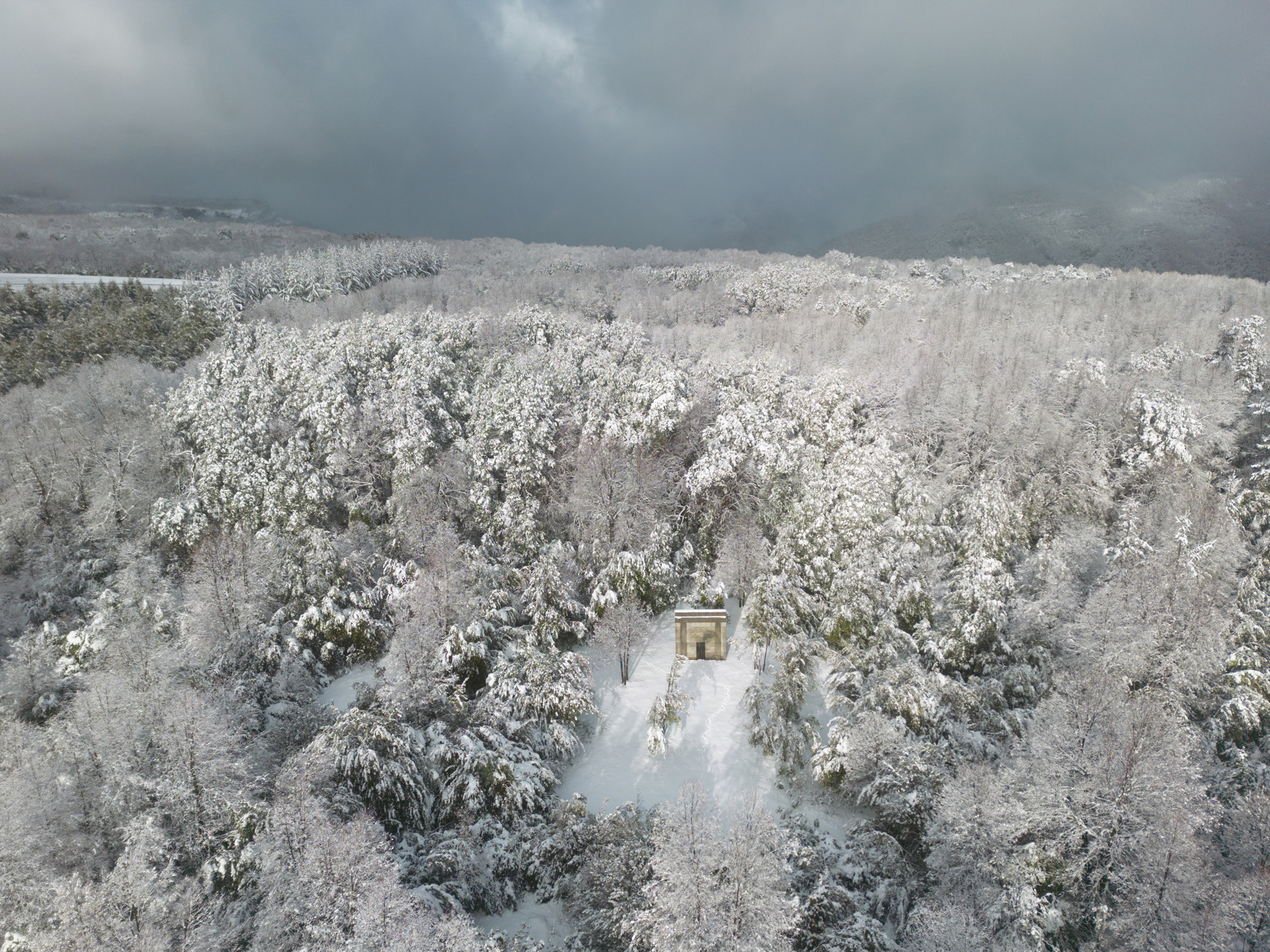 A Chilean pavilion cuts a small yet dramatic figure in a snowy, forested site
A Chilean pavilion cuts a small yet dramatic figure in a snowy, forested siteArchitects Pezo von Ellrichshausen are behind this compact pavilion, its geometric, concrete volume set within a forest in Chile’s Yungay region
-
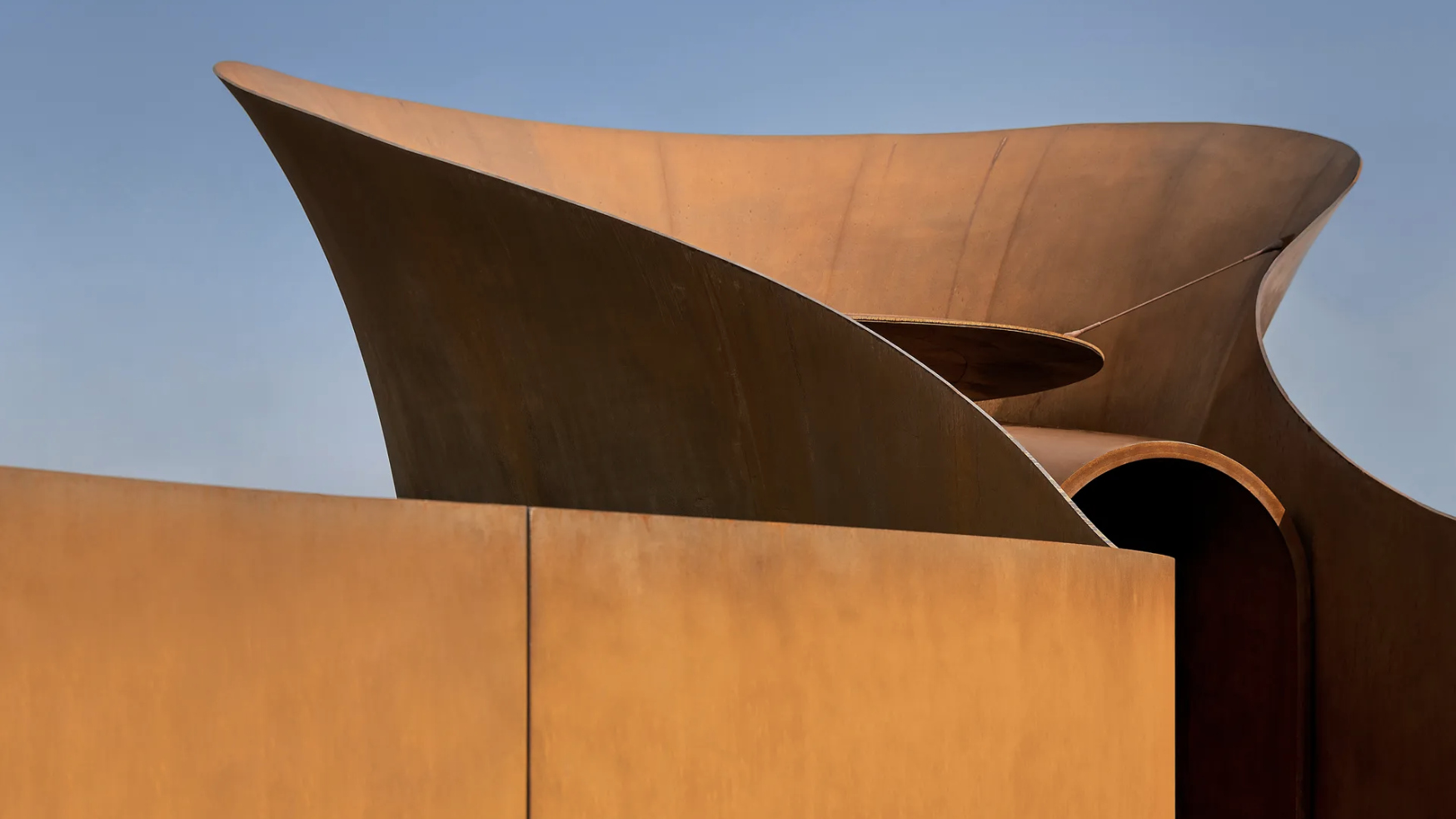 Doshi Retreat at the Vitra Campus is both a ‘first’ and a ‘last’ for the great Balkrishna Doshi
Doshi Retreat at the Vitra Campus is both a ‘first’ and a ‘last’ for the great Balkrishna DoshiDoshi Retreat opens at the Vitra campus, honouring the Indian modernist’s enduring legacy and joining the Swiss design company’s existing, fascinating collection of pavilions, displays and gardens
-
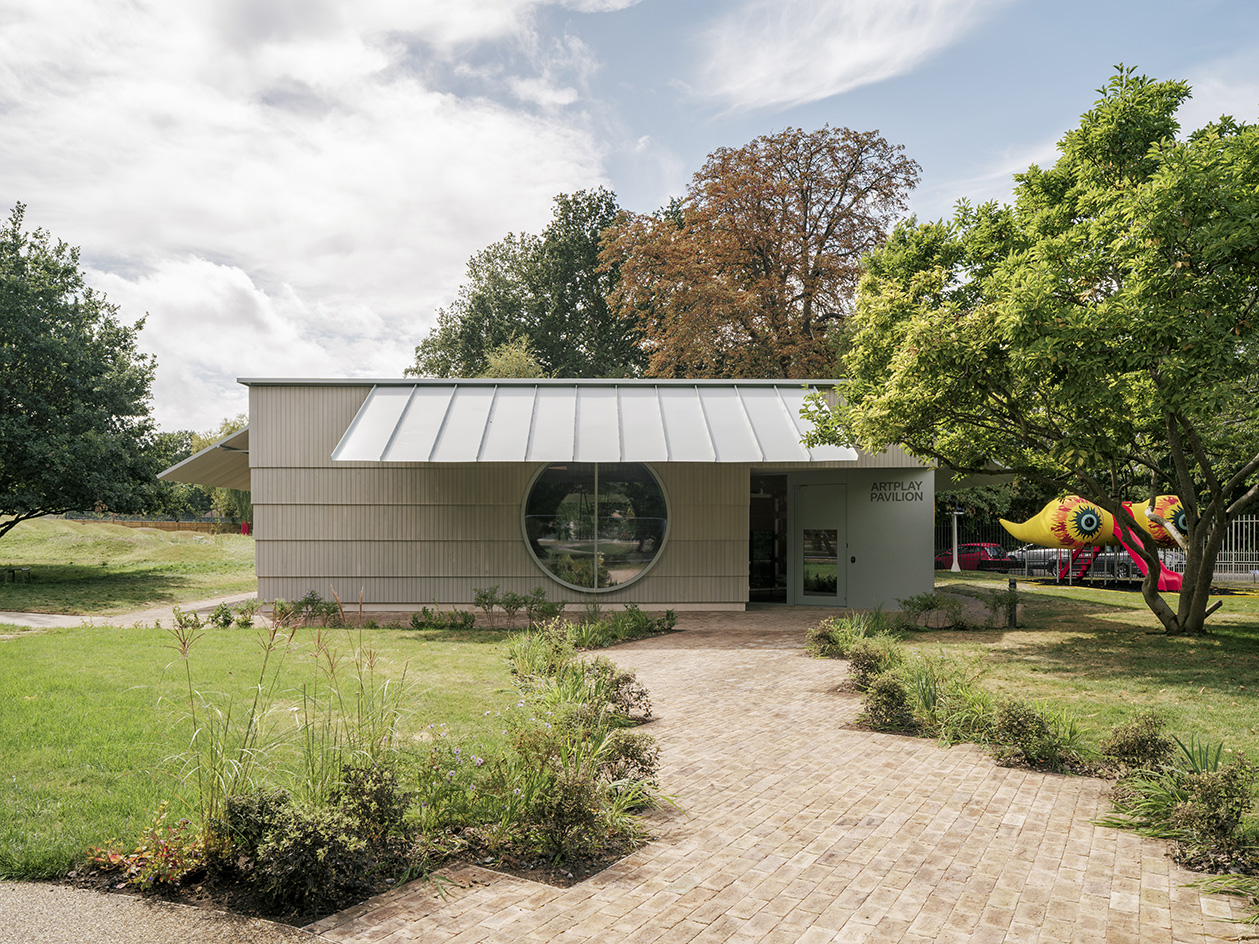 Slides, clouds and a box of presents: it’s the Dulwich Picture Gallery’s quirky new pavilion
Slides, clouds and a box of presents: it’s the Dulwich Picture Gallery’s quirky new pavilionAt the Dulwich Picture Gallery in south London, ArtPlay Pavilion by Carmody Groarke and a rich Sculpture Garden open, fusing culture and fun for young audiences
-
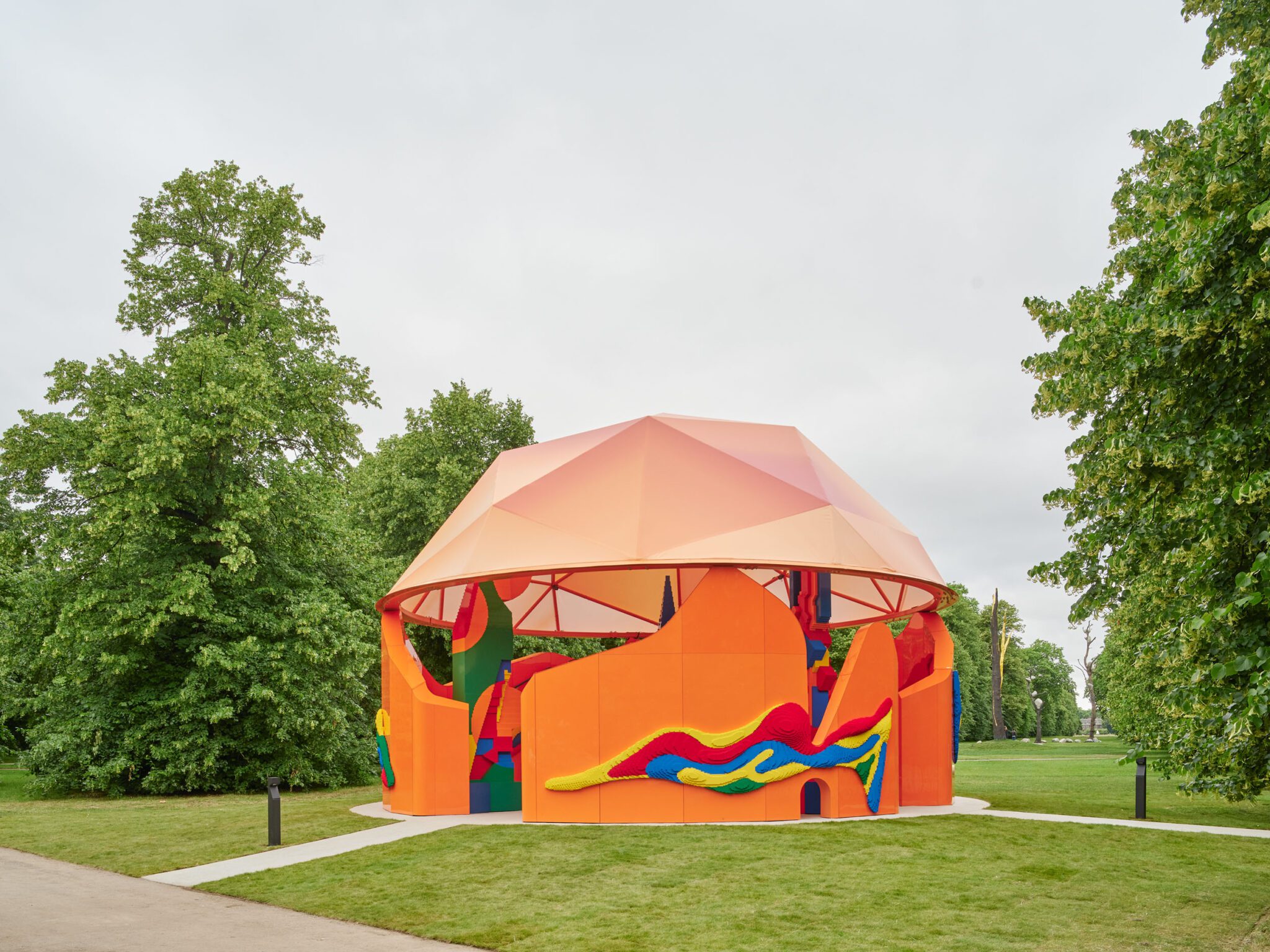 Lego and Serpentine celebrate World Play Day with a new pavilion
Lego and Serpentine celebrate World Play Day with a new pavilionLego and Serpentine have just unveiled their Play Pavilion; a colourful new structure in Kensington Gardens in London and a gesture that celebrates World Play Day (11 June)
-
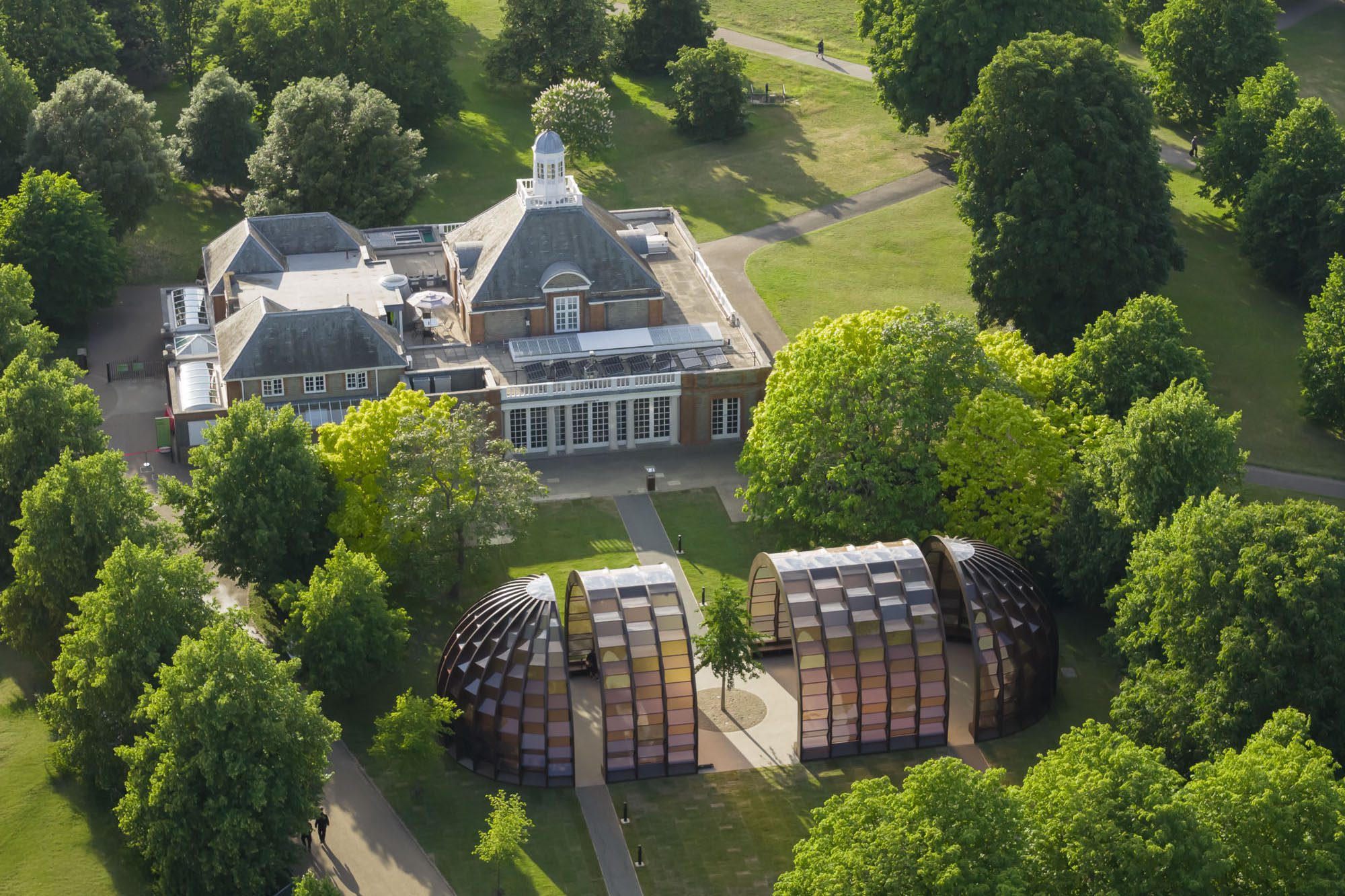 The Serpentine Pavilion 2025 is ready to visit, ‘an exhibition you can use’
The Serpentine Pavilion 2025 is ready to visit, ‘an exhibition you can use’The Serpentine Pavilion 2025 is ready for its public opening on 6 June; we toured the structure and spoke to its architect, Marina Tabassum
-
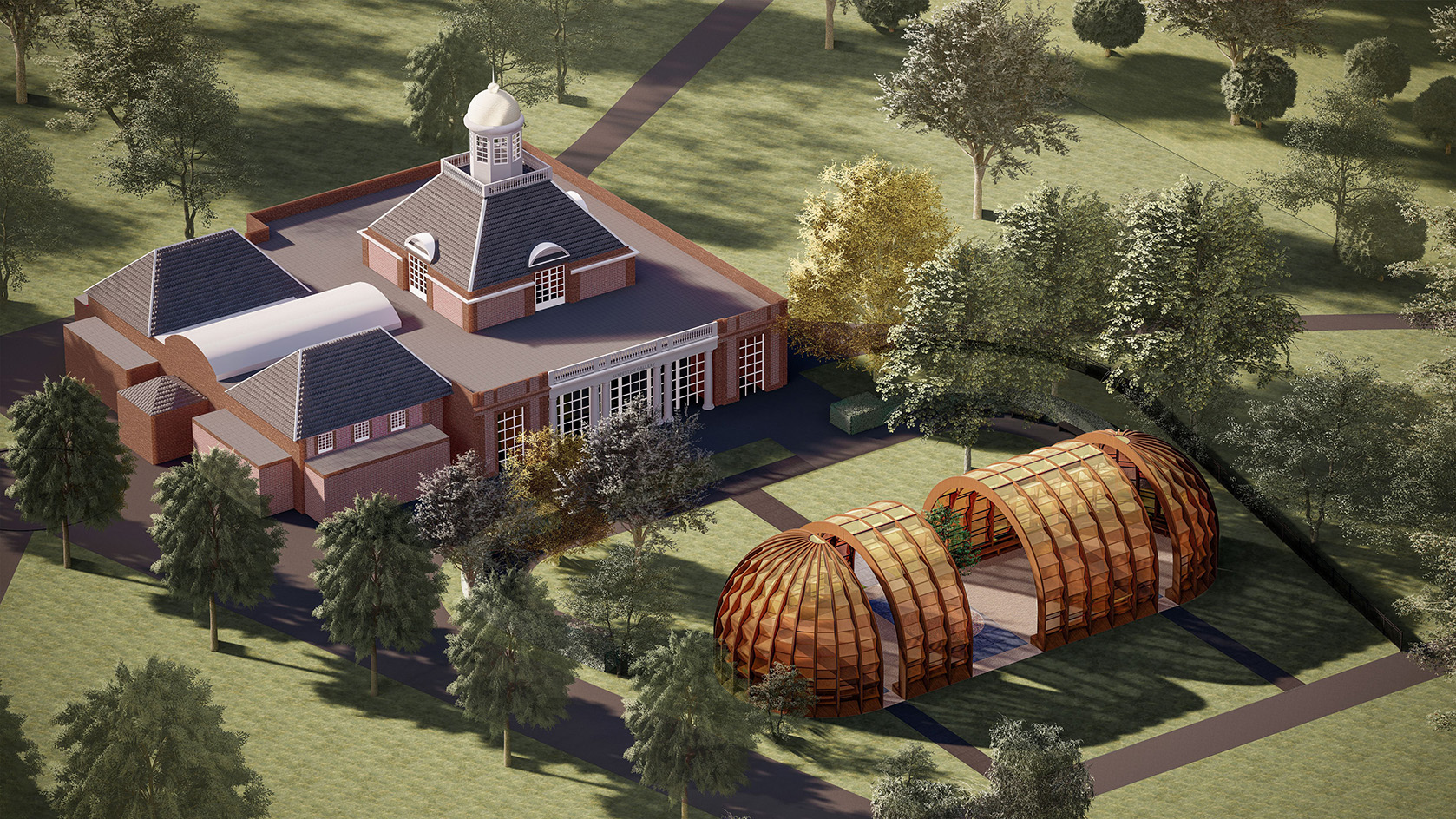 2025 Serpentine Pavilion: this year's architect, Marina Tabassum, explains her design
2025 Serpentine Pavilion: this year's architect, Marina Tabassum, explains her designThe 2025 Serpentine Pavilion design by Marina Tabassum is unveiled; the Bangladeshi architect talks to us about the commission, vision, and the notion of time
-
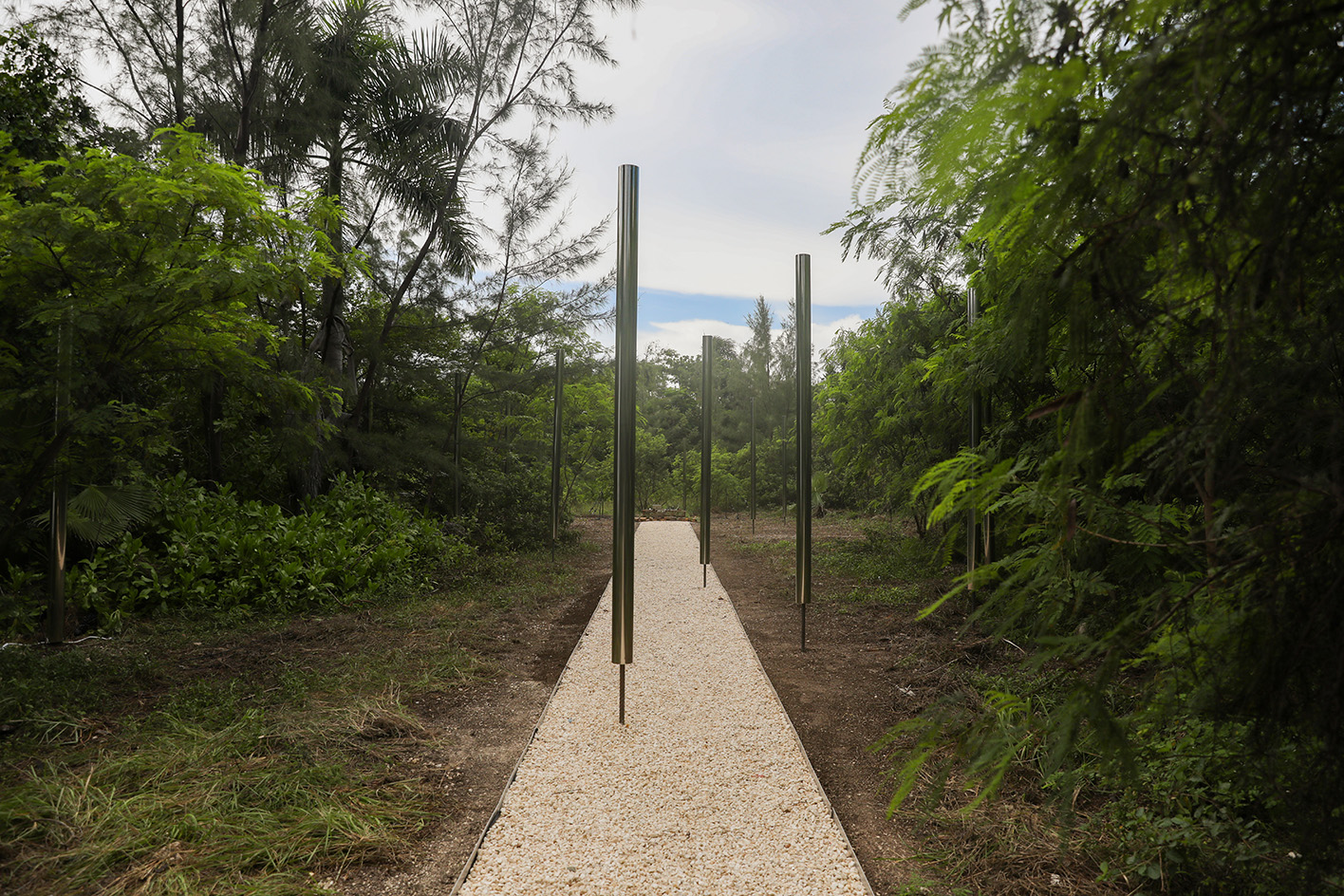 The Duho Pavilion by Limbo Accra immerses us into its Caribbean setting
The Duho Pavilion by Limbo Accra immerses us into its Caribbean settingThe Duho Pavilion by Limbo Accra is a Cayman Islands landscape project that celebrates the Indigenous Caribbean Taino people
-
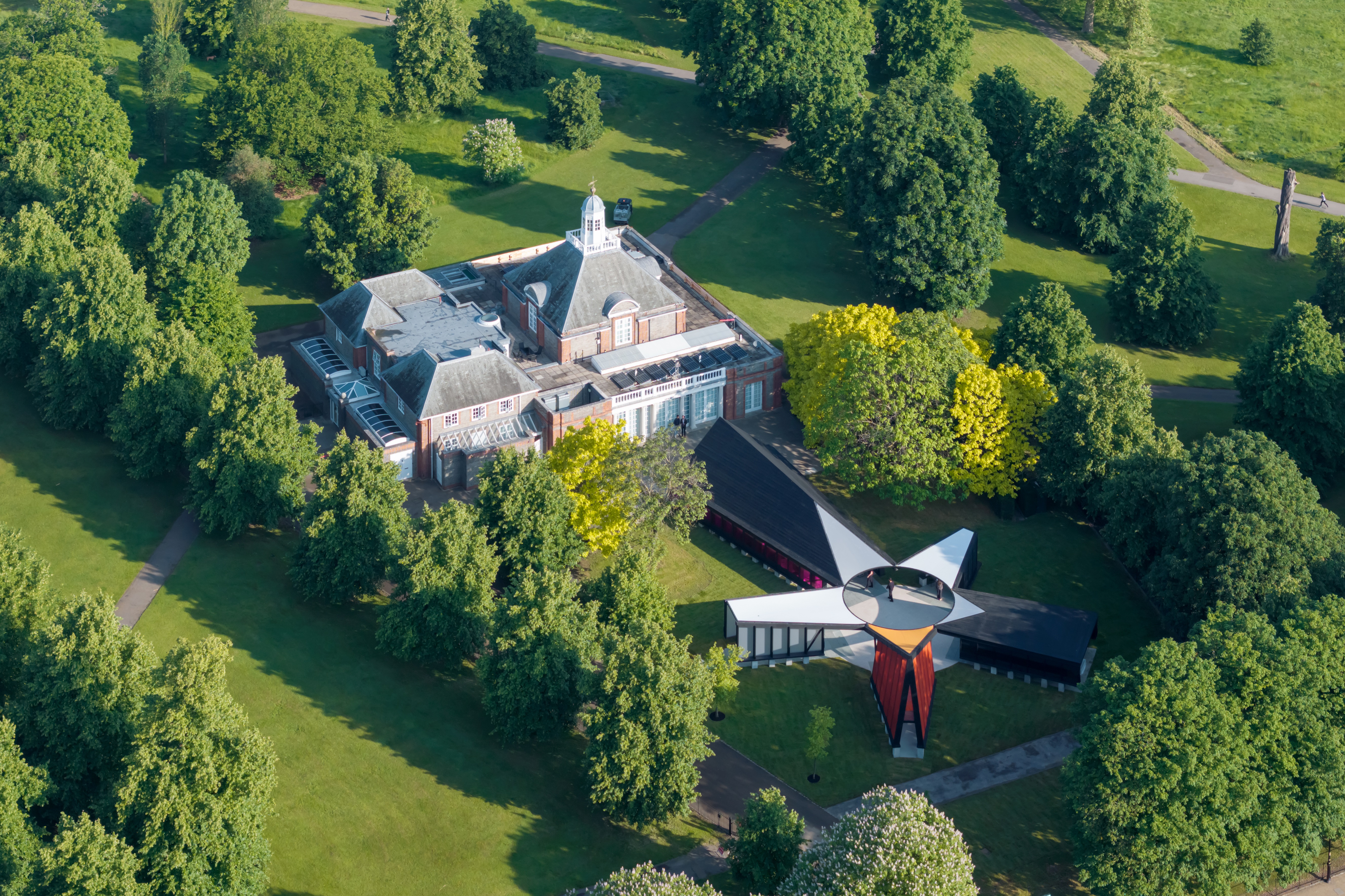 A first look at Serpentine Pavilion 2024: ‘It really is an archipelago’
A first look at Serpentine Pavilion 2024: ‘It really is an archipelago’The Serpentine Pavilion 2024 opens its doors and we catch up with its architect, Minsuk Cho of Mass Studies, to talk about the design’s origins, concept and future travels